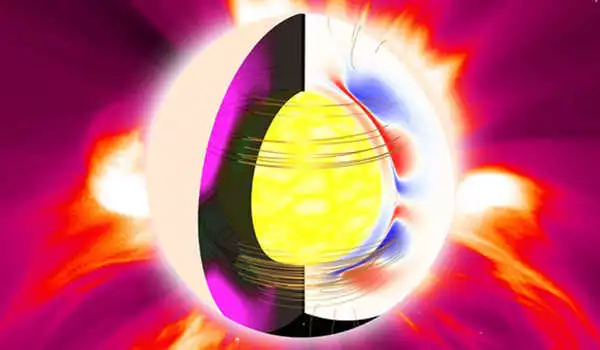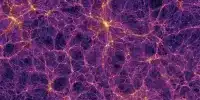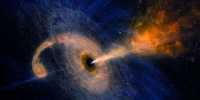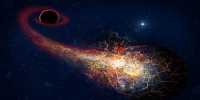Recent observations have revealed a surprising breakdown of stellar gyrochronology relations around the Sun’s age, implying that middle-aged, solar-like stars are transitioning to a magnetically inactive future. It has long been known that stars in their forties and fifties can suddenly switch to a low activity state. According to recent observations, the sun is now much less active than other similarly aged stars.
According to new research published today in Monthly Notices of the Royal Astronomical Society: Letters, middle-aged stars can have their own midlife crisis, with dramatic breaks in their activity and rotation rates around the same age as our Sun. The research provides a new theoretical foundation for the unexplained breakdown of established techniques for measuring the ages of stars beyond their middle ages, as well as the transition of solar-like stars to a magnetically inactive future.
Astronomers have long known that stars undergo ‘magnetic braking,’ in which a steady stream of charged particles known as the solar wind escapes from the star over time, carrying away small amounts of the star’s angular momentum. Over billions of years, this slow drain causes stars like our Sun to gradually slow down their rotation.
The study provides a new theoretical underpinning for the unexplained breakdown of established techniques for measuring ages of stars past their middle age, and the transition of solar-like stars to a magnetically inactive future.
As a result of the slower rotation, magnetic fields change and there is less stellar activity – the number of sunspots, flares, outbursts, and other similar phenomena in the atmospheres of stars, which is inextricably linked to the strength of their magnetic fields.
Because of the gradual loss of angular momentum, this decrease in activity and rotation rate is expected to be smooth and predictable over time. The concept gave rise to the ‘stellar gyrochronology’ tool, which has been widely used over the last two decades to estimate the age of a star based on its rotation period.
However, recent observations indicate that this intimate relationship begins to deteriorate around the age of middle age. Bindesh Tripathi, Prof. Dibyendu Nandy, and Prof. Soumitro Banerjee of the Indian Institute of Science Education and Research (IISER) in Kolkata, India, conducted the new research, which provides a novel explanation for this mysterious ailment.

Using dynamo models of magnetic field generation in stars, the researchers show that around the age of the Sun, the magnetic field generation mechanism of stars abruptly becomes sub-critical, or less efficient. This enables stars to exist in two distinct activity states: low activity and active. A middle-aged star, such as the Sun, can frequently switch to a low activity mode, resulting in significantly reduced angular momentum losses due to magnetized stellar winds.
“This hypothesis of sub-critical magnetic dynamos of solar-like stars provides a self-consistent, unifying physical basis for a diversity of solar-stellar phenomena, such as why stars beyond their midlife do not spin down as fast as they did in their youth, the breakdown of stellar gyrochronology relations, and recent findings suggesting that the Sun may be transitioning to a magnetically inactive future,” Prof. Nandy says.
The new research sheds light on the existence of grand minima, or periods of low activity in the Sun’s recent history when no sunspots are visible. The most well-known of these is the Maunder Minimum, which occurred from 1645 to 1715 and saw very few sunspots.
The team hopes that it will also shed light on recent observations indicating that the Sun is relatively inactive, which has important implications for our own stellar neighbor’s potential long-term future.
This hypothesis of solar-like stars’ sub-critical magnetic dynamos provides a self-consistent basis for a variety of solar stellar phenomena, such as why stars beyond midlife do not spin down fast and recent findings that the sun may be transitioning to a magnetically inactive future. The new research sheds light on the existence of low activity episodes in the sun’s recent history known as grand minima, during which no sunspots are visible.
















